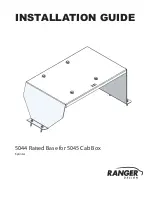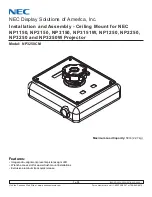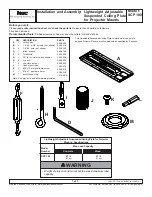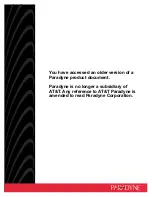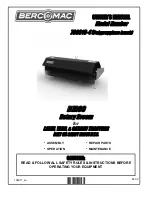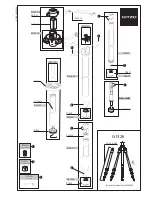4 of 13
Easy Rate Sensor
PN 074-677-P1A
Vacuum rated connectors are recommended for use between the sensor and the
feedthrough to speed maintenance. If brazing adapters are to be used, attach them
to the sensor water-cooling tubes and to the air tube prior to connection to the
feedthrough. Make connections as follows:
CAUTION
To prevent damage to the feedthrough or sensor during
brazing, ensure that at least 2.45 cm (1 in.) of water tube
remains between the sensor head and the flame.
8a
Clean the water tubes, the air tube, and adapter surfaces with solvent, if necessary.
8b
Apply brazing flux to surfaces being joined.
8c
Braze the connections using a flame temperature appropriate for the brazing
material being used.
CAUTION
Excessive application of brazing material, or excessive heat
due to brazing, may result in blockage of the water tubes or the
air tube.
8d
Verify that each joint is not blocked by blowing compressed air through the cooling
tubes and the air tube.
8e
Thoroughly clean the braze joint and helium leak test before installing the sensor and
feedthrough into the process chamber.
9
With all water tube connections and the air tube connection installed, install the
sensor and feedthrough assembly into the process system and secure all retaining
hardware.
10
Shield the in-vacuum cable from heat radiating from the evaporant source or the
substrate heater. If the process allows, wrap aluminum foil around the cable, the
water tubes and the air tube.
11
Connect the external water tubes from the feedthrough to the water supply system
and flow controller. Use detachable coupling (Swagelok
®
or equivalent) for external
water tube connections. Apply water pressure and verify the water connections.
12
Because of geometric factors, variations in surface temperature, and differences in
electrical potential, the crystal and substrates often do not receive the same amount
of material. Tooling factor calibration is required to make sure that the thickness
indication on the instrument accurately represents the thickness on the substrates.
Refer to the instrument operating manual for tooling factor calibration procedures.

